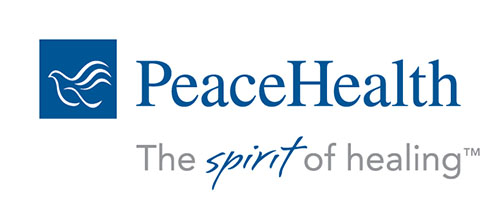By Joe Gaydos and Jonathan White
Joe Gaydos is the director of SeaDoc Society, a member of the Puget Sound Partnership Science Team, and a governor-appointed member of the Northwest Straits Commission.
Jonathan White is a member of the San Juan County Marine Resources Committee and chair of the Northwest Straits Commission.
Despite years of training, it can still be hard for a doctor to determine if you are healthy just by looking at you. That’s why they might require a blood analysis or other tests in addition to your physical exam before they can make a diagnosis. It’s the same way with the ocean. Marine biologists look at multiple vital signs before determining the health of the ocean. And while the Salish Sea, the inland marine waters surrounding the San Juan Islands, looks good on the surface, some of the vital signs are alarming.
We have 64 species in the region that are threatened, endangered, or candidates for listing. The annual commercial harvest of most fish and shellfish has dropped since the 1980’s. Toxic contaminants, especially PCBs and mercury, occur in high enough levels in Puget Sound fish that the Department of Health has advised limiting our consumption of Chinook salmon, some rockfish, and some flat fish.
But like most doctors’ visits, it’s not all bad news. Some efforts to improve the health of the system are paying off. In 2008, the Washington Department of Health found 1,258 acres of commercial shellfish areas with fewer toxins than when previously tested. The run size of Puget Sound Chinook and Hood Canal summer chum, two listed species of salmon, are now greater than before they were listed.
So does this mean we’re doing well? No, this is like going to the doctor and finding out that although your weight is ideal and your cholesterol is low, your blood pressure is high. You might feel fine, and you might be enjoying your life, but you’ve just received some information on which you’d better act. Business as usual is not the healthy choice.
What can be done? Long-term studies of human health have taught us to enjoy the pleasures of life but to temper them with moderation. We can still enjoy a good glass of wine or a decadent meal, but need to remember that it’s eating a balanced diet, drinking in moderation, and routine exercise that will pay off in the long run. From the ocean’s perspective, stopping all fishing or preventing development is not the solution. There are fish to harvest and clams to dig, but not like there’s no tomorrow, or that’s what we’ll get, no tomorrow.
Everything we do on land impacts the ocean. Removing shoreline vegetation will reduce the lands ability to filter toxins moving seaward and rob young fish of insects that make up a significant part of their diet. Blocking a feeder bluff with a bulkhead prevents erosion, which creates habitat for important baitfish like sand lance.
When we clear shoreline vegetation, we don’t immediately see dead fish rise to the surface any more than we feel our blood pressure rise when we eat that fettuccini Alfredo, but the connections are there.
When the doctor tells us we have high blood pressure, we change our habits. How high will the evidence have to stack up before we do the same for our local waters?
**If you are reading theOrcasonian for free, thank your fellow islanders. If you would like to support theOrcasonian CLICK HERE to set your modestly-priced, voluntary subscription. Otherwise, no worries; we’re happy to share with you.**








Joe and Jonathan,
Thank you for writing this article. I appreciate your analogy, it is an egaging way to understand the complex issue of the care and health of water.
Once again we hear that the Puget Sound is unhealthy and we need to do something. No one disputes that the Sound is a mess. The underlying question is, what part of the mess is related to our County islands? To continue with the personal health analogy, Seattle is obese, has hypertension, and high cholesterol, so San Juan County has to go on a diet. This makes no sense.